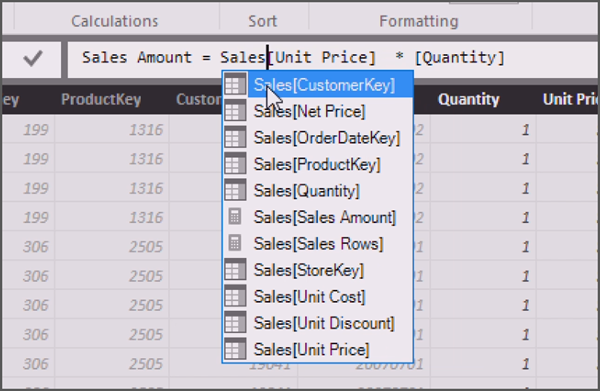DAX is a formula language. You can use DAX to define custom calculations for Calculated Columns and for Measures (also known as calculated fields). DAX includes some of the functions used in Excel formulas, and additional functions designed to work with relational data and perform dynamic aggregation.

Returns the date that is the indicated number of months before or after the start date. Use EDATE to calculate maturity dates or due dates that fall on the same day of the month as the date of issue.

DAX is the native formula and query language for Microsoft Power Pivot (Excel), Power BI Desktop, and SQL Server Analysis Services (SSAS) tabular models. Thus, DAX can be used in any of these programs. DAX uses blanks for both database nulls and for blank cells in Excel. Some DAX functions treat blank cells somewhat differently from Microsoft Excel. Blanks and empty strings (') are not always equivalent, but some operations may treat them as such. The DAX language The DAX language was created specifically for the handling of data models, through the use of formulas and expressions. DAX is used in several Microsoft Products such as Microsoft Power BI, Microsoft Analysis Services and Microsoft Power Pivot for Excel.
Syntax
Parameters
| Term | Definition |
|---|---|
| start_date | A date in datetime or text format that represents the start date. |
| months | An integer that represents the number of months before or after start_date. |
Return value

A date (datetime).
Remarks
In contrast to Microsoft Excel, which stores dates as sequential serial numbers, DAX works with dates in a datetime format. Dates stored in other formats are converted implicitly.
If start_date is not a valid date, EDATE returns an error. Make sure that the column reference or date that you supply as the first argument is a date.
If months is not an integer, it is truncated.
When the date argument is a text representation of the date, the EDATE function uses the locale and date time settings of the client computer to understand the text value in order to perform the conversion. If the current date time settings represent a date in the format of Month/Day/Year, then the following string '1/8/2009' is interpreted as a datetime value equivalent to January 8th of 2009. However, if the current date time settings represent a date in the format of Day/Month/Year, the same string would be interpreted as a datetime value equivalent to August 1st of 2009.
If the requested date is past the last day of the corresponding month, then the last day of the month is returned. For example, the following functions: EDATE('2009-01-29', 1), EDATE('2009-01-30', 1), EDATE('2009-01-31', 1) return February 28th of 2009; that corresponds to one month after the start date.
This function is not supported for use in DirectQuery mode when used in calculated columns or row-level security (RLS) rules.
Example
Microsoft Excel Dax Functions
The following example returns the date three months after the order date, which is stored in the column [TransactionDate].
See also
Dax Microsoft Excel Free

Dax Microsoft Excel Templates
EOMONTH function
Date and time functions